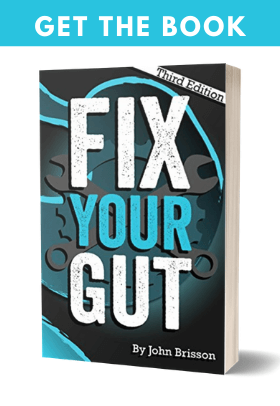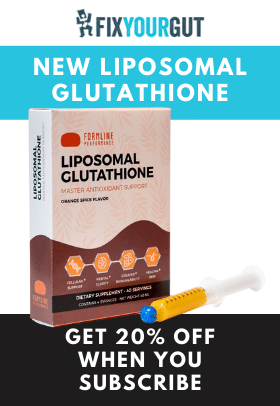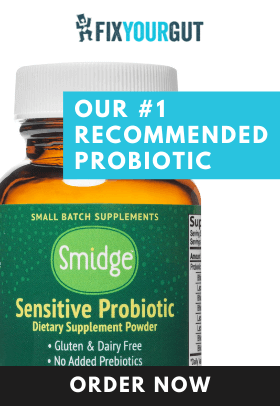Nicotinamide Riboside, Unbounded Energy, Benefits, and Side Effects
Most of us wish that we could have more energy in the modern rat race we live in. Ranging from the person that takes a quick nap during their lunch break at work to the person who has chronic fatigue syndrome. We stay up late at night staring at our phones and struggle to get out of bed to go to work in the morning. Is there a supplement that can help give us energy and help improve our circadian rhythm? Yes, there is a supplement that can do all that and more, nicotinamide riboside.
All About Nicotinamide Adenine Dinucleotide and Nicotinamide Riboside
NAD (nicotinamide adenine dinucleotide) is a coenzyme that is found in all living cells and is involved in redox reactions. The NAD compound consists of two nucleotides (organic molecules that makeup our DNA or RNA), joined together by phosphate groups that contain either an adenine base or nicotinamide (vitamin B3) base. NAD can be made from tryptophan (de novo pathway) and vitamin B3 (Preiss-Handler pathway and Salvage pathway). Supplementing with niacin and especially niacinamide increase cellular NAD+ and mitochondrial NAD+ as intermediates, especially in people who are deficient in vitamin B3. Dietary NAD can be found in animal milk, whey protein, and brewer’s yeast. In humans, NAD is used for metabolism, cellular respiration (energy production), and as an extremely potent antioxidant within our cells. Nicotinamide riboside is the precursor to NAD+ and is a nucleoside made out of niacinamide and ribose. Finally, nicotinamide riboside supplements have a half-life of 2.7 hours and is best to take them on an empty stomach.1 2 3
NAD is highly concentrated in the mitochondria of our muscle cells. Most of the time, the body can produce enough NAD to meet its high energy demands. If the body happens to become overstressed, more NAD is needed by the body, and nicotinamide riboside supplementation might be required to help prevent a deficit. Diseases and medical conditions can also occur or worsen from depletion of NAD. These diseases and conditions include heart disease, heart failure, diabetes, fibromyalgia, and chronic fatigue syndrome. Supplementation of NAD, along with D-ribose, might be helpful for people dealing with these conditions.4 5 6 7
NAMPT (Nicotinamide phosphoribosyltransferase) is an enzyme that is encoded by the NAMPT gene that is a rate-limited enzyme that converts nicotinamide to nicotinamide mononucleotide to enable NAD+ biosynthesis. Caloric restriction, exercise, and stress activate the NAMPT gene, increasing mitochondrial energy production. In people with NAMPT gene polymorphisms less nicotinamide is converted into nicotinamide mononucleotide, so less NAD+ is produced. Supplementation of nicotinamide riboside may help produce more NAD+ and in doing so might offset the lowered NAD+ production issues of a NAMPT polymorphism. “The pathophysiological significance of SIRT1 and other sirtuins has fueled more enthusiasm to investigate NAD biosynthetic pathways. NAD is a universal and essential coenzyme involved in many cellular redox reactions. To generate NAD, mammals utilize four different precursors, including tryptophan, nicotinamide and nicotinic acid (also known as two forms of vitamin B3), and nicotinamide riboside (NR). It is known that the salvage pathway starting from nicotinamide is a predominant NAD biosynthetic pathway in mammals. In this pathway, NAMPT produces nicotinamide mononucleotide (NMN) from nicotinamide and 5′-phosphoribosyl-1-pyrophosphate. NMN, together with ATP, is then converted into NAD by the second enzyme, nicotinamide/nicotinic acid mononucleotide adenylyltransferase (NMNAT). Studies have demonstrated that NAMPT is a dimeric type II phosphoribosyltransferase which functions as the rate-limiting enzyme in mammalian NAD biosynthetic pathway and directly regulates SIRT1 activity. Interestingly, mammals possess two different forms of NAMPT: intracellular and extracellular NAMPT (iNampt and eNampt, respectively). In the past decade, the role of iNAMPT has been extensively studied in many biological processes. Particularly, iNAMPT plays an important role in regulating metabolic function by modulating SIRT1 activity. For example, FoxOs regulate Nampt transcription in the liver, and overexpression of iNAMPT reduces hepatic triglyceride levels. It has also been reported that the levels of hepatic iNAMPT protein decrease in the patients with nonalcoholic fatty liver disease (NAFLD). In skeletal muscle, both glucose restriction and exercise increase iNAMPT protein levels, and iNAMPT levels correlate with mitochondrial contents in humans. iNAMPT also plays a protective role in the stress associated with aging and high-glucose in endothelial cells. Interestingly, we and other groups have reported that the Nampt gene is regulated by the core clock machinery and thereby iNAMPT and NAD levels display circadian oscillation patterns in peripheral metabolic tissues, such as the liver and adipose tissue. In turn, SIRT1 negatively regulates the transcriptional activation of clock genes. In other words, iNAMPT and SIRT1 together comprises a novel circadian-regulatory feedback loop, connecting circadian rhythm regulation to metabolic regulation. These findings suggest that NAD functions as a “metabolic oscillator” that dynamically influences rhythmic regulation of metabolic responses. We have recently found that both iNAMPT and NAD levels are reduced in multiple metabolic tissues and organs by HFD feeding and aging, contributing to the pathogenesis of type 2 diabetes. It appears that inflammatory cytokines and oxidative stress cause the reduction in iNAMPT-mediated NAD biosynthesis, implicating an interesting connection between chronic inflammation and NAMPT-mediated NAD biosynthesis.“8
NAD is the principal carrier of electrons in our cells and mitochondria that produce energy. NAD+ is an electron receptor and becomes NADH when it accepts electrons. NADH also known as the reduced form of NAD+ and is an electron donor. Both types of NAD power the electron transport chain in the mitochondria that allow the production of energy within the mitochondria of the cells. NADH is a strong electron donor because of its electrons form a high-energy linkage. Electrons that are produced in the cytoplasm are transferred to the mitochondrion by a mitochondrial shuttle like the malate-aspartate shuttle and then is oxidized by the electron transport chain to produce ATP (adenosine triphosphate). ATP synthesis and redox potential is directly proportional to intracellular NAD+ concentration, and the NAD+/NADH ratio is an appropriate measure of the metabolic state of our cells.9 10
SIRT1 and NAD+
Sirtuin 1 (silent mating type information regulation one) is a protein that also requires NAD+ to function, and you need both of them for your mitochondria to work effectively. Sirtuin one proteins improve insulin sensitivity in our cells, relieve of Th1 and Th2 dominance, reduces oxidative stress produced by our mitochondria, inhibits NF-κB-regulated gene expression reducing inflammation, and increases longevity (at the very least in yeast).
“Sirtuins are class III histone deacylases that consume one molecule of NAD+ during each deacylation cycle. The first identified sirtuin protein was silent information regulator 2 (SIR2) from Saccharomyces cerevisiae. SIR2 was originally characterized as a chromatin-silencing component that repressed gene transcription at selected loci. Soon after the discovery that SIR2 extended the replicative lifespan of yeast, the orthologs of SIR2 were proposed to carry out the same lifespan-prolonging effects in Caenorhabditis elegans and in Drosophila melanogaster, and to mediate beneficial effects of calorie restriction (CR) on health and longevity. These findings were challenged in 2011 by a study suggesting that SIR2 orthologs in worms and flies did not mediate increases in lifespan. As discussed in the next section, more recent studies in many organisms have now confirmed the original hypothesis that sirtuins are conserved, diet-sensitive, antiaging proteins.
In mammals, the antiaging functions of sirtuins are conserved. There are seven mammalian sirtuins, SIRT1–7, which function to regulate metabolism in nonredundant ways in many tissues. Because sirtuins are located in distinct cellular compartments, they can coordinate cellular responses to CR throughout the organism. SIRT1, SIRT6, and SIRT7 are localized in the nucleus, where they function to deacetylate histones thereby influencing gene expression epigenetically. SIRT1 also deacetylates specific transcription factors and enzymes to influence their activities, as described below. SIRT2 was originally described as a cytosolic sirtuin; however, recent data show that SIRT2 is also found in the nucleus where it functions to modulate cell cycle control. SIRT3, SIRT4, and SIRT5 are localized in mitochondria, and regulate the activities of metabolic enzymes and moderate oxidative stress in this organelle. In general, SIRT3–5 respond to CR by switching cells to favor mitochondrial oxidative metabolism, along with the induction of accompanying stress tolerance.”11 12 13
SIRT proteins regulate genes that:14
- Decrease inflammation (PGC-1α, TORC2, Foxo, LXR, FXR, SREBP)
- Activate gluconeogenesis (PGC-1α, TORC2, Foxo, LXR, FXR, SREBP)
- Decrease fat storage (PPARy and PGC-1α)
- Increase bile acid synthesis (PGC-1α, TORC2, Foxo, LXR, FXR, SREBP)
- Increase insulin secretion (Foxo, UCP2)
- Promote circadian rhythm and wakefulness (PER2, CLOCK)
SIRT1 also provides important roles in our health including increasing sensitivity to the thyroid hormone T3 (improving hypothyroidism), reversing leptin resistance (improving weight loss), upregulates MAO-A production, increases cellular sensitivity to vitamin D, inhibits mTOR, helps protect our cells against nitric oxide excess, and increases adiponectin release from our fat cells. Blue light (especially through our retina) activates SIRT1 and NAMPT. Excessive blue light exposure and a lack of natural sunlight can deplete SIRT1 and NAD over time, and cause activation issues with our PER2 and CLOCK genes causing an unhealthy circadian rhythm. Improper circadian rhythm can lead to poor sleep and low energy levels. When your circadian rhythm is not functioning properly, NAD+ levels and SIRT1 activation are not regulated properly since NAD+ is needed to activate SIRT1, leading to a decrease in energy production and health. Melatonin decreases SIRT1, which makes since we are supposed to sleep in darkness and not be exposed to blue light. Sleeping in darkness signals methylation of serotonin to occur which produces melatonin, which decreases SIRT1 and causes less activation of PER2 and CLOCK, reducing muscular skeletal output, relaxing us while we sleep.15 16 17 18
Though SIRT1 activation is essential for our health, it does follow the pattern of our circadian rhythm and chronically elevated SIRT1 may cause issues. SIRT1 can increase Th17 cell differentiation worsening Th17 dominance in some people. SIRT1 inhibition is being investigated as a possible cancer treatment because activation of SIRT1 promotes cell survival over apoptosis (cell death) by inhibiting apoptosis proteins which are not suitable for cancerous or unhealthy cells. Finally, SIRT1 overproduction may impair nightly liver regeneration lead to the development of non alcoholic fatty liver disease.19 20 21
Nicotinamide Riboside Side Effects
High supplemental dosages of nicotinamide riboside (more than one thousand milligrams daily) may cause insomnia, anxiety, fatigue, and overstimulation from excess energy production. If any of these side effects occur with supplementation, I would lower the dosage and see if the side effects persist. If you continue to have issues with the lowest possible dose, discontinue supplementing with NAD. I recommend that if you are going to use vitamin B3 supplementation to increase NAD+ that you use niacinamide (in a low dose of a few hundred milligrams daily in the morning, it may still decrease SIRT1) over niacin, which has a less side effect profile (no flushing) and seems to work better. Finally, because melatonin decreases SIRT1 per circadian rhythm and the liver shrinks at night to regenerate, I do not recommend the supplementation of nicotinamide riboside at night, even for shift workers, because it activates SIRT1.
“Although Nam is the predominant endogenous precursor of the NAD+ salvage pathway, early reports suggested that it may not be as effective as other biosynthesis precursors in increasing NAD+ levels; however, this likely reflects the relatively small dose of Nam used. Additionally, Nam effects likely depend on cell/tissue type and the pathophysiologic state. For instance, in a nonstressed state, Nam is inferior to NA as an NAD+ precursor in the liver, whereas under HFD-induced metabolic challenge, Nam is a more powerful NAD+ precursor and SIRT1 activator than NA. Nam has been used for many years for a variety of therapeutic applications (such as diabetes mellitus) at doses up to 3 g/d, with minimal side effects. Unlike NA, Nam has no GPR109A agonist activity, thus escaping the prostaglandin-mediated vasodilatory side effects. Yet, at high doses Nam has a toxic potential (particularly hepatotoxicity), raising health concerns and, as well as with long-term use, can cause negative feedback to inhibit sirtuins.”
Chris Masterjohn in a podcast mentioned that in some people suffering from undermethylation any vitamin B3 supplementation (including nicotinamide riboside) might worsen symptoms by increasing methylation and further robbing needed methyl donors. Vitamin B3 in any form (for example niacin requires SAM-e to be metabolized, reducing available methyl groups by depleting SAM-e) according to Chris Masterjohn involves methylation to be metabolized. An absence of methylated niacin metabolites in your urine can be considered a niacin deficiency. Reduction in methylation can also reduce creatine (lead to decreased muscle recovery) and choline (lead to cognitive issues) production and metabolism which require methyl groups. Improving methylation by supplementing with the following listed methyl donors, trimethylglycine (TMG), methyl folate, or methyl B12 are some examples, may offset any methylation issues when supplementing vitamin B3.
Finally, the occasional use of a clean source of nicotine (not tobacco) in the morning if you are healthy increases both NAD+ and SIRT1 and can help improve mitochondrial function and your energy levels.
Recommended Nicotinamide Riboside Supplement
Recommended nicotinamide riboside supplement: HPN Nutraceuticals NIAGEN
Dosage recommendation: Take one NIAGEN upon wakening on an empty stomach and wait to eat breakfast for at least thirty minutes to an hour for maximum absorption. If you need another burst of energy you can take another one two hours after lunch, but be aware it may cause sleep disturbances.
- Jane B. Reece, Lisa A. Urry, Michael L. Cain, Steven A. Wasserman, Peter Minorsky, Robert Jackson. Campbell Biology, Benjamin Cummings, October 7, 2010. ↩
- https://www.ncbi.nlm.nih.gov/pubmed/2043605 ↩
- https://phys.org/news/2012-06-miracle-molecule-video.html ↩
- https://www.ncbi.nlm.nih.gov/pmc/articles/PMC3616313/ ↩
- https://www.nature.com/articles/srep26933 ↩
- https://www.nature.com/articles/s41467-018-03421-7 ↩
- https://www.ahajournals.org/doi/pdf/10.1161/CIRCULATIONAHA.117.032626 ↩
- https://www.ncbi.nlm.nih.gov/pmc/articles/PMC3819727/ ↩
- Jane B. Reece, Lisa A. Urry, Michael L. Cain, Steven A. Wasserman, Peter Minorsky, Robert Jackson. Campbell Biology, Benjamin Cummings, October 7, 2010. ↩
- Lane, Nick. Power, Sex, Suicide, Mitochondria and the Meaning of Life, Oxford University Press, December 11, 2006. ↩
- https://www.cell.com/trends/endocrinology-metabolism/fulltext/S1043-2760(13)00206-3 ↩
- https://www.selfhacked.com/blog/nad-and-sirt1-their-role-in-chronic-health-issues/ ↩
- https://www.ncbi.nlm.nih.gov/pmc/articles/PMC3527007/ ↩
- https://www.ncbi.nlm.nih.gov/pmc/articles/PMC3527007/ ↩
- https://www.ncbi.nlm.nih.gov/pmc/articles/PMC3527007/ ↩
- https://www.ncbi.nlm.nih.gov/pubmed/25536521 ↩
- https://journals.plos.org/plosone/article?id=10.1371/journal.pone.0009199 ↩
- https://www.cell.com/trends/endocrinology-metabolism/fulltext/S1043-2760(13)00206-3 ↩
- https://www.ncbi.nlm.nih.gov/pubmed/28445726 ↩
- https://www.ncbi.nlm.nih.gov/pmc/articles/PMC3789038/ ↩
- https://www.ncbi.nlm.nih.gov/pubmed/24338587 ↩







Is this NIAGEN you recommend?
https://www.amazon.com/Bundle-Niagen-Booster-Cellular-Metabolism/dp/B08HCTPNGX/ref=sr_1_1
(Not made by HPN)
Would you recommend Thorne’s ReservaCel? Am considering supplementing with NR and NMN after hearing David Sinclair.
[Thanks for your great work1]